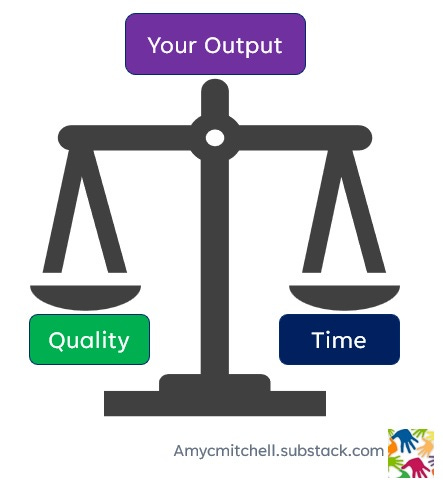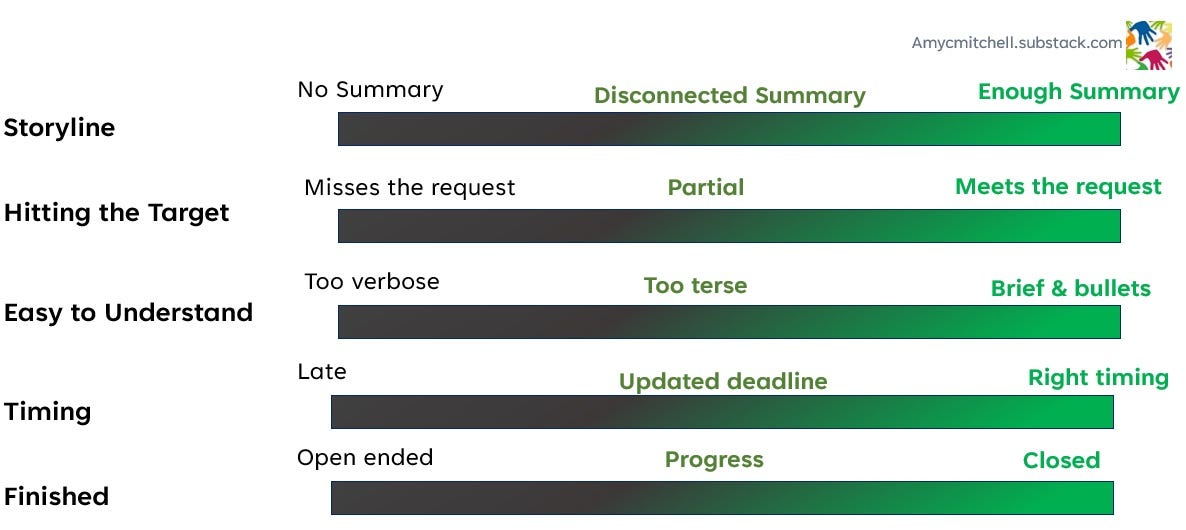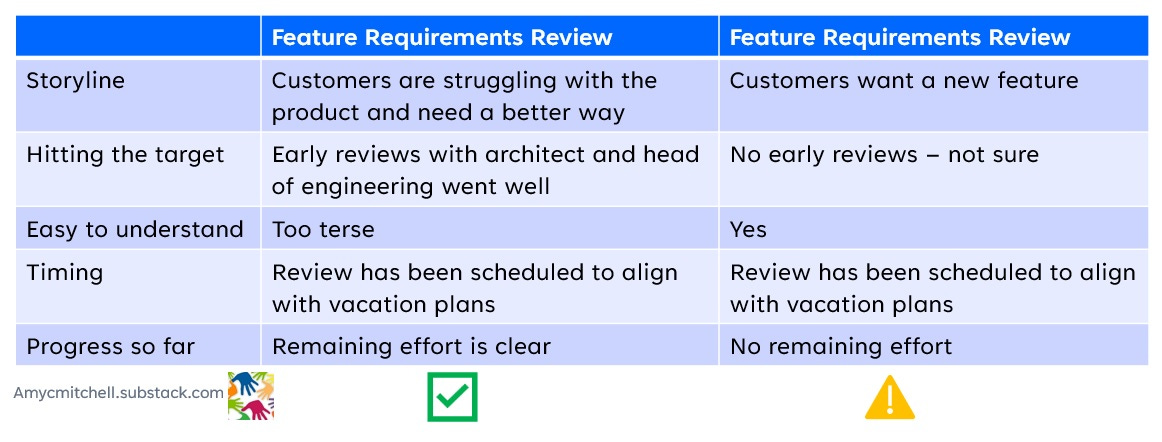Prioritizing Quality in Product Management
Finding your sweet spot for doing quality work as a product leader
It is a week until you need to present feature requirements to engineering. You've held several discovery calls with customers and researched competitive offers. You have a lot of detailed information and requirements. How do you know if you are ready for the presentation to engineering? What if you need to prepare for several customer meetings at the same time? How can you balance quality work with your time constraints?
Strategies to Balance Quality and Time
In a fast-paced organization, product managers need to deal with 3 competing principles in their daily work:
Hours available for work
Content of work
Quality of work
Balancing all these is very challenging - even after you've ruthlessly prioritized your commitments. It can be very tempting to sacrifice quality to spend your limited time on product initiatives. By lowering the quality of your output, you waste the time of many others.
Here are a few strategies to deliver quality in your product management role without overworking yourself:
Define your quality principles
Keep an eye on deadlines
Ask for feedback on missing pieces
Let's discuss how to put these strategies into practice!
Define Your Quality Principles
Product managers relish doing great work and usually have pretty high-quality standards for themselves. Even so, there is a range of quality standards. Here are key principles of quality to consider:
Storyline: does your project have a story?
Hit the target: did the project hit the target of the request?
Easy to understand: is this something that the audience can understand?
Timing: is the project done at the right time?
Finished: how did you let the team know you finished?
Taking these principles all together, you have a standard of quality in your product management work. You can use these principles as a guide to stay on track with your quality principles. These come in handy to check progress as you go.
As you progress on each project, you can check where you are on the range of quality principles. Below are the ranges for each of these quality principles.
Typical product management projects that use this range of quality principles are:
Feature requirements
Customer discovery reports
Pricing strategy
Product vision and strategy
Business case
Product issue overview with a recommendation
Ordering guide
Marketing content
These projects may have firm deadlines or they might be part of a larger product initiative. Either way, you need to keep deadlines in mind as you evaluate quality principles on your projects.
Keep an Eye on Deadlines
Understanding dependencies on your work is a great way to put your quality principles into action. Dependencies to understand are:
Product lifecycle deadlines
Customer budget timelines
Marketing events
Resource availability
Your commitments to work and non-work
Each of these dependencies has deadlines and you monitor the deadlines that need something from you.
Once you have prioritized your product management projects and you understand your near-term deadlines. You use your quality principles to guide your next commitment.
For example, your biggest trade show is next month and your stakeholders want to know what it would take to accelerate a big feature in your backlog. Using your quality principles, you can lay out what you can do with the time remaining with quality. Below is how you evaluate these 2 competing requests against your quality principles:
With this information, you can discuss waiting until after the trade show to give a report to your stakeholders on the feature acceleration.
Another example is your readiness to present feature requirements to engineering in a week. Your quality principles evaluation looks like this:
The middle column shows a case where you have had preliminary reviews with engineering and incorporated their input into your review. In this case, you have met your quality principles and you are on track for the review.
On the right column, you haven't had early reviews and your material is done. You don't yet know if you are on target with your engineering audience. You are probably not ready for the review unless you can squeeze in preliminary meetings and adjust your material.
This leads to the third strategy to balance quality with time: Ask for feedback.
Ask for Feedback on Missing Pieces
Your quality principles can help you evaluate what you know. However, your quality principles fall short on things you don't know. When you are head down on your product, then you might not know what is worrying your stakeholders or your product team.
Review your main points 1 on 1 with key team members to get feedback on missing pieces. Also, check on what is remaining to finish.
Conclusion - Strategies to Prioritize Quality in Product Management
Sacrificing quality under time crunches hurts your ability to lead in product. Passing on incomplete material or half-baked projects downstream snowballs into confusion and wasted effort. Likewise striving for perfection leads to missed opportunities. As key leaders in the organization, product managers need to be careful to set and act on reasonable quality standards.
Using these strategies enables better quality in your product initiatives:
Use your quality principles consistently
Use your quality principles to manage to deadlines
Ask for feedback early to spot missing pieces
Taking these steps provides a way to prioritize quality principles while setting reasonable deadlines for you and your product team.
Link of the Week
Why Product Management is Hard Product management is uniquely hard in both visible ways and in unseen ways. @Jason Knight discusses how product managers can focus on key actions to be successful on the job.






Great post. I love that quality gradient image.
Thanks for the inspriation, Amy!
I am a big supporter of being conscious of the quality one's work: https://www.leadinginproduct.com/p/prioritizing-quality-not-tasks-alone